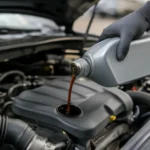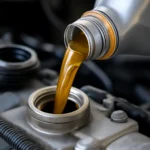Are you aware of the required safety distances between LPG and LNG storage tanks? Why are these separation guidelines crucial for industrial safety, and how can you ensure compliance? Keep reading to learn more!
LPG Tank Separation Distance
LPG (Liquefied Petroleum Gas) storage tanks are widely used for industrial purposes, particularly in facilities requiring large amounts of fuel for heating, manufacturing, or other uses. When setting up these tanks, ensuring an adequate separation distance is vital for both safety and regulatory compliance.
Why LPG Separation Distance is Crucial
The reason for maintaining a specific separation distance between LPG storage tanks lies in the potential risks associated with gas leakage, explosion, and fire hazards. In the event of a leak or tank malfunction, the separation distance ensures that damage is minimized, and the impact is limited to a smaller area, reducing the risk to personnel, nearby facilities, and the surrounding environment.
LPG is a flammable substance, and when it leaks, it can form an explosive mixture with air. These tanks are often placed in industrial zones, which may be densely packed with other flammable equipment or buildings. Without proper separation, the risk of multiple tanks being compromised by one event increases significantly.
Guidelines for LPG Tank Separation Distance
The separation distance for LPG storage tanks is generally governed by national and international safety standards. These standards vary based on the size of the tanks, the capacity of the storage facility, and local regulations. Here are some of the common factors taken into consideration:
-
Tank Capacity: Larger tanks typically require greater separation to prevent large-scale damage in case of an incident.
-
Proximity to Buildings: LPG tanks must be positioned a specific distance away from buildings or structures that could catch fire or collapse.
-
Wind Direction: In some cases, environmental factors like prevailing winds are considered to ensure that any escaping gas is dispersed in a direction away from sensitive areas.
-
Emergency Access: There must be enough space for emergency responders to access the tank area easily in case of a fire or explosion.
-
Distance from Other Tanks: To minimize the risk of multiple tanks being affected by one accident, sufficient separation between tanks is critical.
In addition to the basic safety distances, these guidelines also include specifications for the installation of fire barriers, emergency shutdown systems, and regular maintenance checks to ensure the tanks are in safe operating condition.
Example Scenario
Imagine a scenario where an LPG tank in a chemical plant malfunctions and begins to leak. Due to the required separation distance, the nearby tanks are far enough away to avoid catching fire from the leak, allowing fire safety teams to control the situation without fear of a chain reaction. This example highlights how safety standards in separation distances save lives and protect property.
LNG Tank Separation Distance
LNG (Liquefied Natural Gas) storage is another critical component in industrial settings where natural gas needs to be stored in large quantities. Like LPG, LNG is a flammable and potentially hazardous substance, and ensuring an adequate separation distance between LNG storage tanks is just as crucial.
Why LNG Separation Distance Matters
LNG storage tanks are typically larger and hold more significant amounts of fuel than LPG tanks. Due to this, they require even more strict safety measures to mitigate the risk of an explosion or fire. Maintaining the right separation distance helps limit the spread of fire or explosion in case of an emergency, as LNG’s flammability becomes especially dangerous when in its liquid form.
LNG has a much lower boiling point compared to LPG, making it more volatile in certain conditions. If there’s a sudden leak or accident, the gas expands rapidly, and its high volatility increases the risk of ignition. As with LPG, the larger the LNG tank, the greater the required separation to protect neighboring facilities.
Key Considerations for LNG Tank Separation
The guidelines for LNG separation distances are similar to those of LPG but tend to be more stringent due to LNG’s increased volatility. Key factors include:
-
Tank Size and Capacity: Larger LNG tanks, often used in gas processing or import facilities, require more considerable separation.
-
Nearby Infrastructure: LNG tanks must be located a safe distance from other critical infrastructure, such as control rooms or electrical substations.
-
Evacuation Routes: Adequate space must be maintained for personnel evacuation in the event of an emergency.
Additionally, LNG tanks must be designed and constructed with robust safety features, including pressure relief valves and fire suppression systems, to further mitigate risks associated with leaks.
Real-World Example: LNG in Coastal Areas
In coastal LNG terminals, which handle large-scale LNG storage and shipping operations, the separation distance is particularly important due to the proximity to populated areas. For instance, in regions such as the Gulf Coast of the U.S., LNG terminals must comply with strict separation standards to prevent accidents from affecting nearby residential zones.
LPG Separation Distance: Ensuring Safety in Everyday Operations
The concept of LPG separation distances is not just an industrial standard but also an essential safety feature in residential, commercial, and transport operations. Ensuring proper distances is a key part of safety inspections and regulatory compliance.
Best Practices for Ensuring LPG Separation
-
Regular Inspections: Regular checks of the LPG tanks’ conditions ensure no leaks or safety hazards are present.
-
Proper Signage and Safety Markers: Clear signage is important to remind workers and visitors of the necessary precautions, such as the designated separation distances.
-
Training for Workers: Ensuring that everyone on site understands the importance of these safety distances is a critical part of maintaining operational safety.
LPG separation distances can vary depending on the location and type of installation, so it’s important to work with professionals to understand and implement the specific requirements for your facility.
Case Study: LPG in Industrial Settings
In a manufacturing plant, workers may be handling large cylinders of LPG for heating purposes. By ensuring proper separation distances, the risk of a fire spreading from one tank to another is minimized. Moreover, clear markers and signage on site ensure that workers are always aware of the safe distances required between tanks, improving overall safety compliance.
Conclusion
The safety of LPG and LNG tanks is critical in preventing devastating accidents in industrial settings. Proper separation distances between tanks not only reduce the risks associated with flammable gases but also ensure compliance with safety regulations. Whether you’re dealing with LPG or LNG, understanding and implementing the correct separation distances is a crucial part of maintaining a safe working environment.
By following industry guidelines and ensuring that all safety measures are in place, you can reduce the likelihood of accidents and protect both personnel and property from harm.






